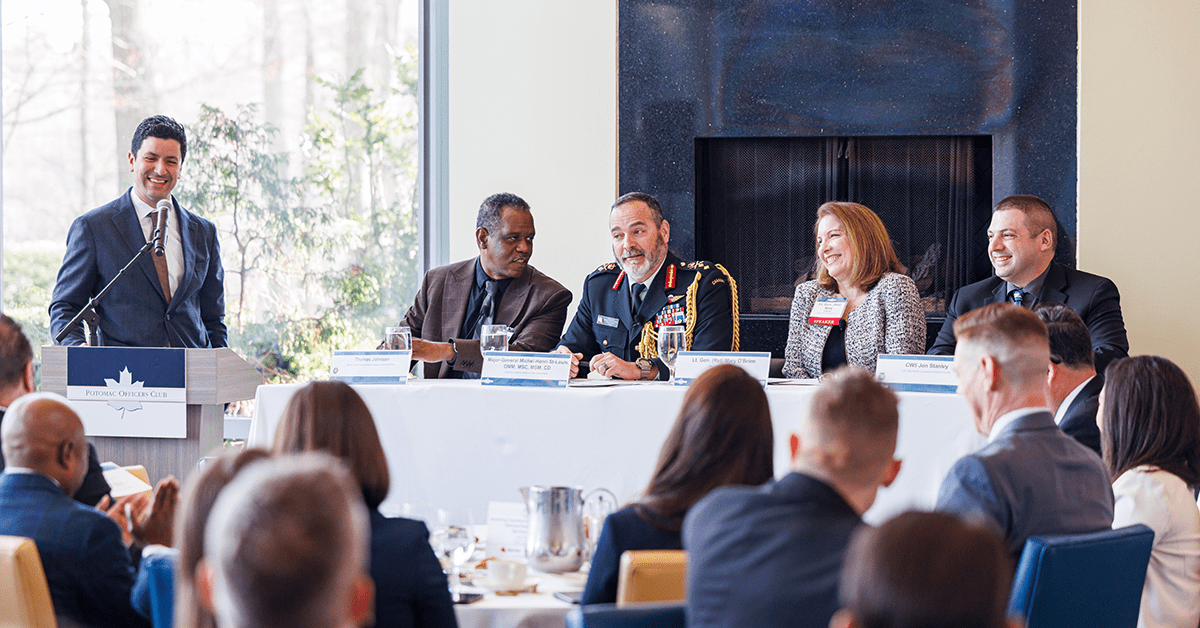The U.S. government is seeking to increase the transparency of shared data throughout its joint forces to prepare to face upcoming challenges as a global united front.
During a panel discussion titled “Putting the C in CJADC2” at the Potomac Officers Club’s GovCon International Summit on Oct. 10, government and intelligence officials discussed the recent developments of the Pentagon’s Combined Joint All-Domain Command and Control initiative, or CJADC2, and the integration challenges the military must face to build a more collaborative relationship with partnering organizations and allies.
Officials, including Maj. Gen. Michel-Henri St-Louis, Canadian defense attaché to the U.S., believe the United States should be at the forefront of a “combined environment” tasked with thwarting global security challenges. Furthermore, Major-General St-Louis expressed that the U.S. government could better lead from the front.
“There is no world that is not better by the U.S. being in the lead,” St-Louis said. “That leadership role from the U.S. is in danger when you go at it either alone or too fast and everyone else cannot keep up with you.”
Christopher Johnson, chief technology officer at the National Geospatial-Intelligence Agency, said that to develop an efficient combined environment, the government must build a “global interconnected mesh” throughout all partnering military operations.
“You’re talking about millions of people and devices all needing to simultaneously communicate and share information. That’s not going to work if we’re trying to funnel everything through these chokepoints,” Johnson said. “We have to start thinking about how to empower these individual elements of the entire warfighting and policy-making ecosystem so they can operate independently of one another.”
James McFarland, vice chief of staff of the U.S. Air Force, highlighted three “buckets of limitation” in developing a combined environment. These limitations include developing common technologies — including data and people tagging — policy aligning and global risk tolerance factors.
To respond to these limitations, Johnson called on industry partners to design systems with more open architectures that can be built upon from the beginning of developmental processes.
“Industry partners, stop designing and bringing solutions that have proprietary data needs,” Johnson emphasized. “There are plenty of open standards out there. We need to start with those, those need to be your default going in positions. It makes it a lot easier for us to then integrate those solutions and capabilities on the back end.”
With the U.S. military now a part of the global “digital sphere,” McFarland called for increased connectivity across partnering networks.
“I absolutely agree there is a digital sphere. That sphere does have holes in it, and it has places where the sphere is warped by the threat. So it’s no longer a sphere, it’s not all the way out there,” McFarland stated.
“In the intelligence community, that connection needs to happen. There is a lot of great information that flows. Some of this is technology, some of it is a common data integration layered in architecture to get the information, but a lot of it is policy,” McFarland said. “We need to find ways to change our policy, take that exquisite information that we’re getting, and move it rapidly.”
You can learn about the current state of the U.S. intelligence community as well as the transformative policies that secure the global digital sphere at the 2024 Homeland Security Summit on Nov. 13. Grab a ticket now to make sure you don’t miss out on the event!





